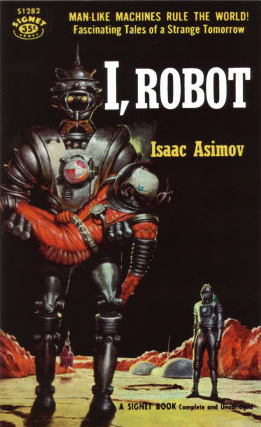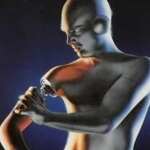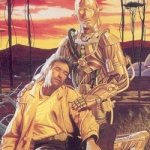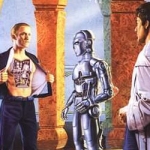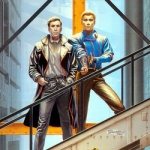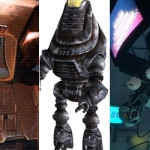When Fandomania chose “robots” as the theme for the month, one of the first things that came to mind was the classic science fiction of Isaac Asimov. I read his series known as the Robot Novels in high school and I remember loving them, especially because of the way that Asimov managed to say so much about current events and humanity in general even though he was talking about things happening far in the future. I was going to re-read them and then write an article summarizing the books and their themes, but after reading only one I realized that I had forgotten just how much meat there was to cover in each one — far too much for one article — so this is just the first of a series on Isaac Asimov’s Robots, in which we will explore the collection of short stories entitled I, Robot.
Origins
In 1939, a young writer named Isaac Asimov wrote his first robot story, “Robbie,” about the friendship between a little girl and her nanny robot, to the dismay of the girl’s parents. It was published in a science fiction magazine the next year, followed over the next decade by eight other stories that describe the development of robots and the evolution of the way humans relate to them. In 1950, the nine stories were collected into one volume, extra narrative was added in order to join the individual stories into a cohesive whole, and it was published under the title I, Robot.
The setting is the not-so-distant future — in fact, the first story takes place around the turn of the 21st century. It seems strange to us today, but it was still half a century away at the time Asimov wrote the stories, and as such it is very reminiscent of the space-age visions so prevalent in the first decades post-World War II. The linking narrative involves a reporter who is told nine stories by Dr. Susan Calvin, who has just retired at the age of seventy-five from the U.S. Robotics and Mechanical Men Corporation, where she worked as a robo-psychologist, helping people figure out why their robots were acting strangely. Through the stories, we are treated to Asimov’s vision of a future filled with robots to do things that humans can’t do, but unlike other familiar futuristic settings, robot labor isn’t the cure-all for humanity’s ills.
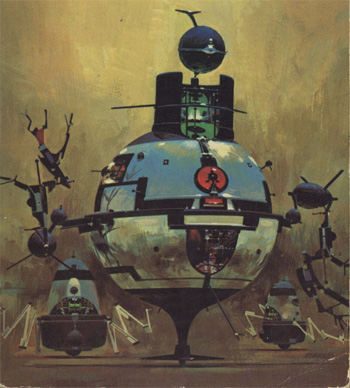
The Three Laws of Robotics
One thing Asimov was eager to do with his first robot stories was to present a different picture from the stereotypical robot of the time that was created to harm humans and therefore had to be destroyed — thus, the birth of the Three Laws of Robotics, which proved to be essential plot points in many of his later science fiction works. The three laws are as follows:
- A robot may not injure a human being, or, through inaction, allow a human being to come to harm.
- A robot must obey the orders given it by human beings except where such orders would conflict with the First Law.
- A robot must protect its own existence as long as such protection does not conflict with the First or Second Law.
Every robot is controlled by its positronic brain, and the essence of the positronic brain is based around the three laws. As each story shows, however, the interaction between robots and humans and the interplay of the three laws can often be complex and lead to puzzling situations. What constitutes harm to a human: physical, emotional, or both? What happens when the positronic brain is altered to allow it to ignore some types of harm in order to do a particular job? Can the second law ever override the first law? What happens when preventing harm to one human would cause greater harm for many more humans, or vice versa? All of these questions are addressed in I, Robot.
Major Themes
As I said at the beginning, one of the things I love about Asimov is the way his future world highlights key issues for us today, even when today is now the future time he wrote about, only without the robots. The nine stories of I, Robot cover everything from religion to politics to economics, with a heavy dose of the impact of technology on humans. One of the most interesting themes relates to the relationship between humans and robots, and the fear of technology is a thread that runs through each story, manifesting itself in discrimination against robots and the banning of robots from being used on Earth. Although we don’t have these kinds of robots to contend with right now, advanced technologies and the fear of their consequences still cause a great deal of conflict among some people today — for example, some medical technologies come to mind, like those involving stem cells and genetic modification. In Asimov’s view, it ultimately comes down to what constitutes the greater good for humanity as a whole, and humans must decide which they’d rather have: control over their world (which is an illusion at best anyway) or a world which is largely free of need and conflict because the humans act based on the directions of machines that are capable of seeing the big picture and truly acting in humanity’s best interest. It’s an interesting idea to consider, and one that I think would be very difficult for humans to make, ultimately, but who knows? Not us, nor Asimov, but I suspect that because we can still see the truth in his writings today, sixty years on, it’s probably more accurate than we might think.
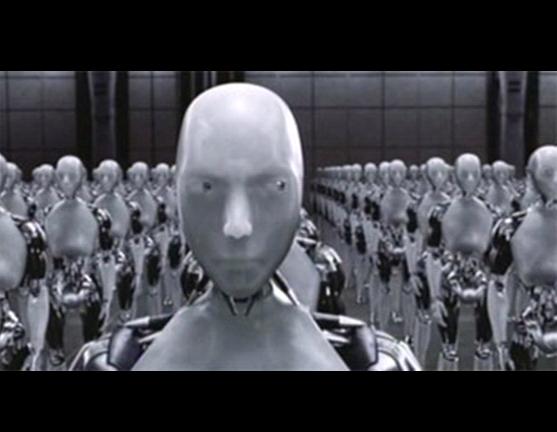
A note about the movie…
This was longer than I intended, but before I wrap it up I feel like I need to address the issue of the 2004 movie by the same name as Asimov’s 1950 book. The movie bears no relation to the book, despite what the producers might want you to think. It is based around Asimov’s ideas, namely the three laws, and it features Asimov’s U.S. Robotics Corporation with employees bearing the same names as several of Asimov’s characters (including Susan Calvin). You might even notice a scene or two that reminds you of similar circumstances in one of the stories. Other than these passing similarities, however, they are completely different stories, not to be confused with each other.
Next up…
I know I said a lot in this article, and I could have said much, much more. Please feel free to share your ideas and reactions in the comments — it’s a topic ripe with discussion possibilities. Stay tuned for the next installment, which will be about the first of Asimov’s so-called Robot Novels, a futuristic mystery called The Caves of Steel.


